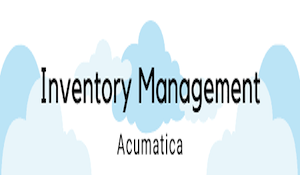4 min read
Best ERP for Wholesale Distribution
Finding the best ERP for wholesale distribution system is crucial for streamlining your business operations, optimizing inventory management,...

Inventory often represents a significant portion of a company’s assets and if well-controlled, it can be a key contributor to a company’s success.
Too often however, an ad-hoc inventory system that worked well while a company was in start-up, is no longer adequate once that company that has reached a level of growth.
At this stage, more formal inventory control measures may be needed.
Do any of these issues sound familiar?
If you’ve encountered any of those issues, you likely have an inventory control problem. Finding the sweet spot with inventory requires organization, determination, and patience, but it’s worth it. Here are a few tips to get started.
Who has access to the locker or warehouse where you stock inventory? How are you keeping track of what comes in and goes out?
If it’s become a bit of a free-for-all, you’ll need to establish repeatable procedures for logging items in and out as well as a tool (e.g. spreadsheets, software, or whiteboard) for keeping track of those items. Then designate one or two people who have access to your stock. Everyone else goes through them and everything is tracked.
Assign each item in your inventory a dollar value and determine its demand by reviewing past sales orders.
Book a day with the people you designated as stock controllers and get an accurate count of everything in your stockroom or warehouse. This is tedious, yes, but it reaps huge rewards down the line.
Many businesses use an ABC categorization method. “A” products are your high-value items that you use the most often. “B” products don’t need quite as much attention and “C” products might require some safety stock (a level of inventory for each item that prevents disruption if an item is temporarily unavailable from a supplier), but you rarely need them.
Whatever method you use to categorize your inventory, make sure it gives you a clear picture of what’s moving and how often. This will increase your order efficiency by leaps and bounds.
Building a rapport with suppliers can be beneficial in myriad ways. For example, open communication can lead to greater flexibility in how much and how often you order.
Smaller and more frequent orders on heavy movers can reduce inventory you’re sitting on, while larger, less frequent orders for slow movers can have the same result. Also, a good relationship gives you more opportunity to negotiate on pricing and delivery times.
A first-in, first-out process is crucial if you’re dealing in perishable items, but it’s a good practice even if you aren’t. Even durable goods can wear out sitting on a shelf for too long. This might require putting the newer items on the back of the shelf behind the older ones, or date stamping items when they come through your door.
As business grows and demands change, inevitably some items will become obsolete.
But is there an opportunity to turn them into profit? Running a sale on items made from obsolete parts is one idea.
Even if you simply write them off and move them out, you’re freeing room and budget for more frequently used parts.
Even if you have automated the tracking process, few systems are perfect. A physical count of your inventory should be done monthly, quarterly, or yearly.
Pick times that are typically slow and enlist help if you need to. Some businesses use cycle counting, which means one or two types of items get counted at regular intervals.
Take a look at your past sales activity and determine your average monthly and quarterly sales of each inventory item over the past year.
Pay attention to any spikes or drops in delivery quantities that may occur due to seasonality – you’ll need to keep this in mind when you are developing your forecasts for your upcoming fiscal period.
These are just a few ideas of how to get on top of your inventory. Once you’ve got it locked down and your systems in place, you are set up for smarter forecasting, ordering, shipping, and budgeting.
If your inventory control needs are more complex, than you may wish to consider some form of Inventory Management Software.

4 min read
Finding the best ERP for wholesale distribution system is crucial for streamlining your business operations, optimizing inventory management,...
4 min read
As we discussed in last week’s post, modern distribution business software provides accurate, company-wide inventory data that lets you create...

2 min read
Maximize Your Market Potential with Acumatica Cloud ERP and Integrated Inventory Management. Stay ahead of the competition and unlock greater...